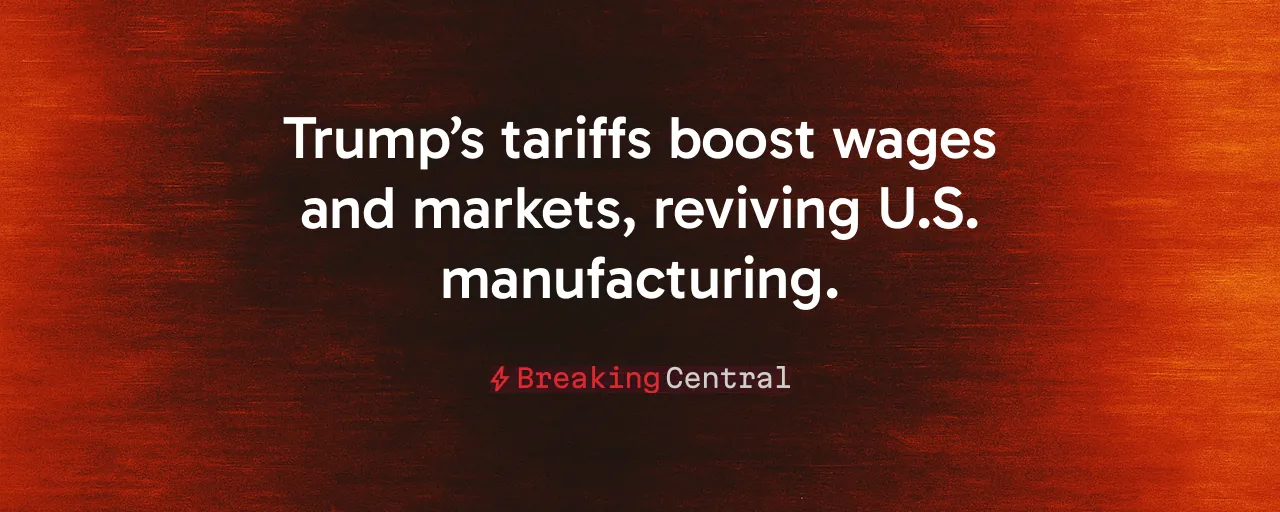A New Economic Dawn
President Donald Trump’s return to the White House has ignited an economic firestorm. His America First trade agenda, unveiled in April 2025, promised strength and prosperity. Now, just months later, the results speak loudly. Wall Street is soaring, with the S&P 500 hitting record highs. Blue-collar workers are pocketing the largest real wage increases in nearly six decades. Consumer confidence is climbing, and fears of runaway inflation have evaporated. This is no accident. It’s the fruit of bold policies rooted in prioritizing American workers and businesses.
The White House points to clear wins. Major banks like JPMorgan Chase and Goldman Sachs have raised their year-end S&P 500 targets, signaling trust in sustained growth. Gas prices linger below $3 a gallon, a four-year low. Jobs reports have exceeded expectations for four consecutive months, with unemployment reported at 4.2%. These aren’t just numbers. They reflect real gains for families, small businesses, and investors who feel the economy working for them again.
Yet, this moment raises a deeper question. How did a strategy built on tariffs, tax cuts, and deregulation deliver where skeptics predicted failure? The answer lies in a vision that puts American interests first, challenging decades of globalist trade dogma. By focusing on workers and domestic industry, Trump’s policies are reshaping the economic landscape.
Tariffs That Deliver
At the heart of this boom are tariffs, a tool long dismissed by free-trade advocates. Trump’s 15-20% average tariffs on imports have not triggered the price spikes critics feared. A Treasury-backed study reveals imported goods’ prices are falling faster than overall goods, defying predictions of consumer pain. This counters the narrative that tariffs burden households. Instead, they’re leveling the playing field for American manufacturers.
The evidence is striking. Manufacturing jobs are rebounding, with 139,000 private-sector positions added in May alone. Blue-collar workers, often left behind in globalized trade deals, are seeing real wages rise nearly 2% in five months. These gains outpace inflation, which sits at a comfortable 2.8%, the lowest since 2021. Tariffs are generating revenue to fund tax relief, easing burdens on families and businesses.
Historical parallels bolster this approach. In the 1980s, Reagan’s supply-side tax cuts paired with targeted protectionism spurred growth. Trump’s strategy builds on that legacy, using tariffs to pressure trading partners while shielding domestic industries. The result? A trade deficit narrowing for the first time in years, proving strategic protectionism can coexist with prosperity.
Markets and Confidence Soar
Wall Street’s enthusiasm reflects the broader optimism. After a brief April sell-off, the S&P 500 roared back, setting records by June. Banks like Barclays and UBS now predict even higher gains, driven by corporate confidence in Trump’s deregulatory push. Lower energy costs, thanks to relaxed regulations, are fueling this rally. The wealth effect from rising equities is boosting consumer spending, creating a virtuous cycle.
Consumers are noticing. Surveys from the Conference Board and University of Michigan show confidence rebounding after a five-month dip. Americans no longer fear an inflation spike. With core CPI stable and gas prices low, households feel secure planning for the future. This optimism is critical, as consumer spending drives nearly 70% of the economy.
Still, challenges loom. Some economists warn of overvalued stocks, propped up by share buybacks rather than fundamentals. Others point to a participation rate stuck at 62.4%, suggesting not all workers are reaping the benefits. These concerns, while valid, don’t overshadow the broader trend: a market and populace energized by policies that reward risk and innovation.
Guarding the Gains
Sustaining this momentum demands vigilance. The Federal Reserve, wary of overheating, could raise rates prematurely, stifling growth. Legal battles over tariff authority, rooted in Sections 232 and 301, threaten to derail progress. Congressional debates over making tax cuts permanent could falter if deficit hawks prevail. These risks require steady leadership and clear priorities.
Trump’s team has a plan. Maintaining tariffs until trade deficits shrink signals resolve to trading partners. Extending the 2017 tax cuts, paired with new relief, will keep capital flowing to businesses. Deregulation in energy and finance must continue to lower costs and spur investment. Pressuring the Fed to hold rates steady unless inflation tops 3% will preserve borrowing power for families and firms.
A Vision for the Future
This economic surge is more than a moment. It’s a validation of prioritizing American workers, businesses, and sovereignty. Tariffs have empowered manufacturers, tax cuts have unleashed investment, and deregulation has cut red tape. The result is an economy that rewards effort and ingenuity, from factory floors to trading desks.
Yet, the work isn’t done. Policymakers must resist calls to dilute tariffs or scale back tax relief. They need to address legal and fiscal hurdles while ensuring low-income households aren’t squeezed by tariff-sensitive goods like apparel. A bipartisan commission to monitor prices could balance consumer protections with trade goals, offering a pragmatic path forward.
Trump’s America First agenda has delivered tangible results: soaring markets, rising wages, and renewed confidence. By staying the course, the nation can build on this foundation, proving that strength and patience, as Trump urged, yield greatness. The road ahead is clear. It’s time to double down on what works.
